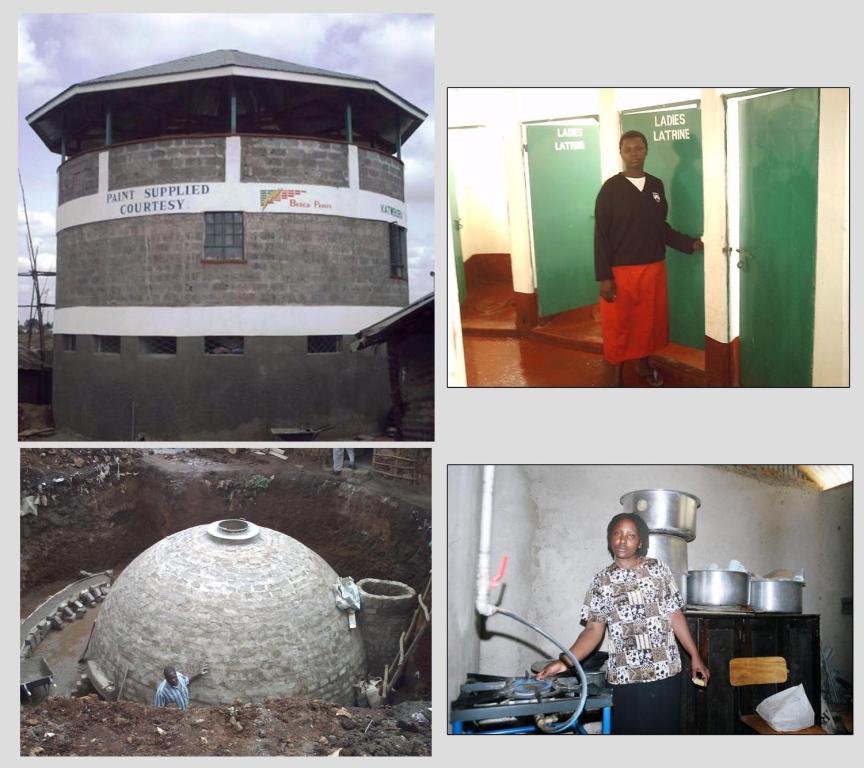Community-designed, built and managed toilet blocks in Indian
cities [
E & U, 2003]
Community toilets in Pune and other Indian cities (Participatory
Learning and Action Notes #44, iied, 2002)
The
two publications above describe the sanitation work of SPARC − the Society for
the Promotion of Area Resource Centres, an Indian NGO. Further information here and The Work of SPARC, the National Slum Dwellers Federation and
Mahila Milan (iied, 2001)
[Mahila
Milan is a decentralised network of poor women's collectives that manage credit
and savings activities in their communities (Mahila Milan means “Women
Together” in Hindi)] ►Watch the video here − courtesy of SPARC India.
The political and
administrative context of slum improvement: two contrasting Indian cases (IRC,
2008) − the second case study is on SPARC community toilet blocks.
An Alternative Model for Responding to Children in Poverty:
The Work of the Alliance
in Mumbai and Other Cities (Children, Youth and Environments, 2005)
− see ‘Community Toilet
Programs’, including special toilets for children, pdf pages 7−9.
 |
The SPARC-style sanitation block in Gatwekera village in Kibera, Nairobi,
managed by the community women: top left − general view (top floor used as a
women’s meeting room, for parties, etc.); top right − women’s toilets; bottom
right − the anaerobic digester beneath the toilets; bottom right − using the
biogas from the digester for cooking.
Photographs courtesy of Rob Clarke, Halcrow/Water
and Sanitation for the Urban Poor.
|
Communal Toilets in Urban Poverty
Pockets: Use and user satisfaction associated with seven communal
toilet facilities in Bhopal, India [WaterAid, 2010] – Briefing Note.
Public toilets in Nairobi’s informal settlements [presentation
at AfricaSan2008, Durban, February 2008].
See
also Maji na Ufanisi’s webpage on Community sanitation blocks in
Kibera
Community toilets: a source of income [Gramalaya
webpage]
Public toilets in urban India: Doing business differently [WSP-South
Asia, 2007]
From Hazard to Convenience: Towards Better Management of Public
Toilets in the City of Nairobi [WSP, 2004]
Public Toilets
Guidelines − Rural: Step by Step Implementation Guidelines for Public
Toilets in Rural
Areas [WaterAid, 2006]
Cluster Latrine
Guidelines – Urban: Step by Step Implementation Guidelines for Child-friendly
Cluster Latrines in Urban Areas [WaterAid, 2006]
The Slum Sanitation Program in Mumbai, India [World Bank,
2006]
Community Toilets in Tangerang,
Indonesia [UNESCAP,
undated]
The Mumbai Slum
Sanitation Program: Partnering with Slum Communities for Sustainable Sanitation
in a Megalopolis [WSP, 2006]
Management Options for Public Toilets in Liuzhou, China [World Bank, 2006]
Community-managed Toilets: Understanding Where It Can Work [WaterAid, 2005]
Reaching the Poor through Sustainable Partnerships: The Slum
Sanitation Program in Mumbai
[World Bank,
2003]
Issue Paper on Pro-poor Governance for Delivery of Basic
Services [UN-Habitat, 2005]
Rejuvenation of Community Toilets [UN Habitat Policy Paper,
2007]
Guidelines on Community Toilets [World Bank, 1995]
Public and communal latrines [Technical Brief, Waterlines,
1991]
Community toilets [Gramalaya webpage]
Rejuvenation of Community Toilets [UN Habitat, 2006]
‘Clean’ concept that won Kenyan global honours [Daily
Nation, Kenya,
2007]
UK: Improving Public Access
to Better Quality Toilets: A Strategic
Guide (Department for Communities and Local Government, 2008)
Photos: Communal sanitation block, New Delhi
Communal sanitation block, Marraquene, Mozambique (more facilities for women
than for men)
Kawakawa
toilets [Bay of Islands, New Zealand − public toilets can
be beautiful!]
Listen:
Bathroom Blues Part 2 [Australian Broadcasting Corporation,
2003]
Part 1 is
here. RealPlayer free download
here.